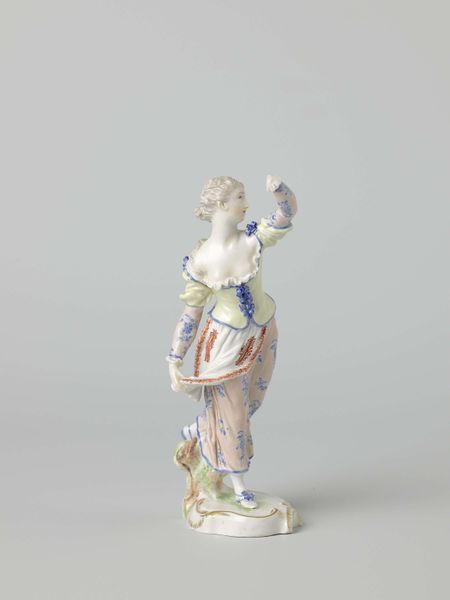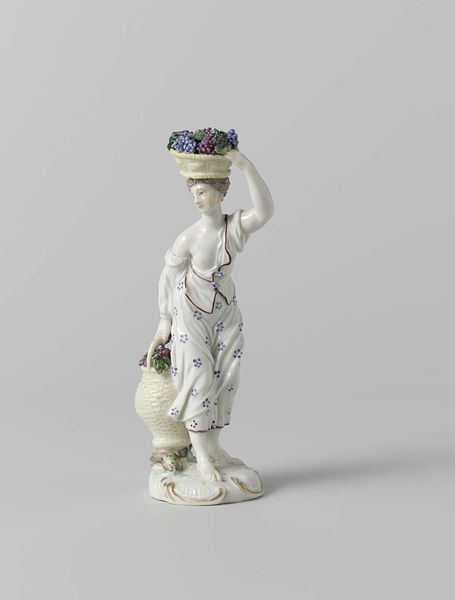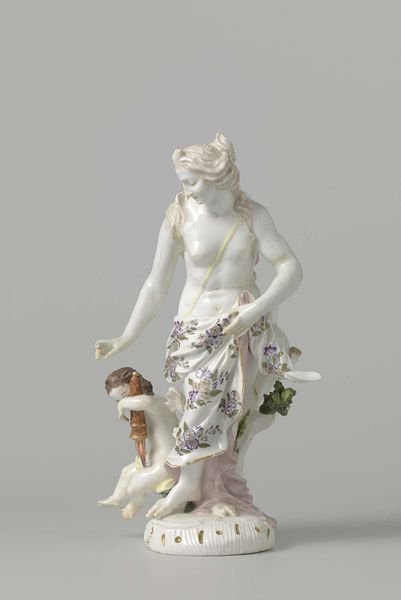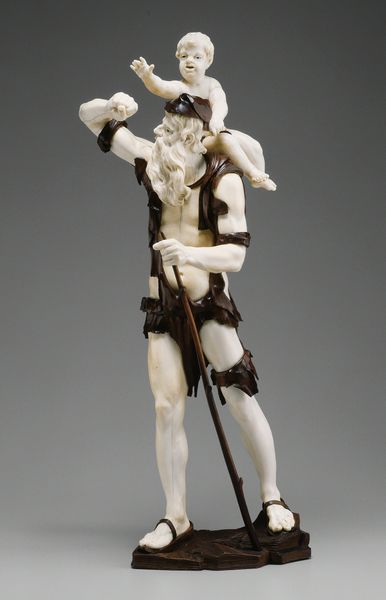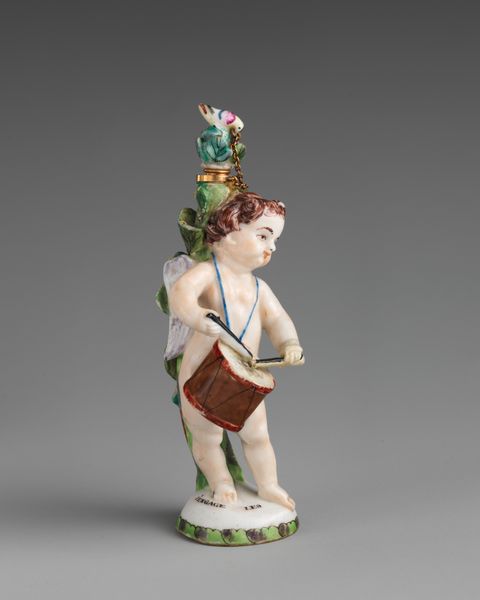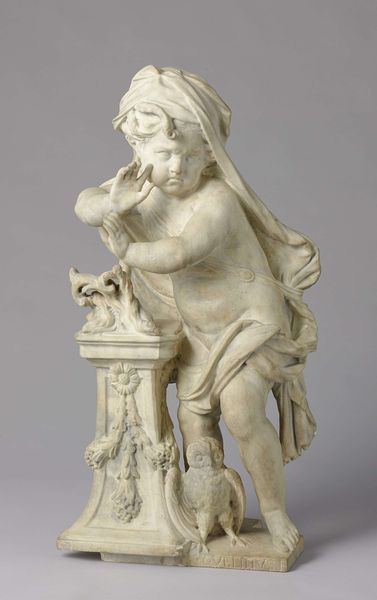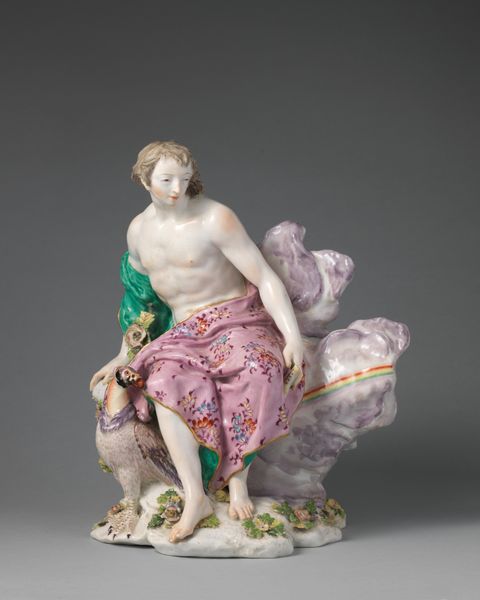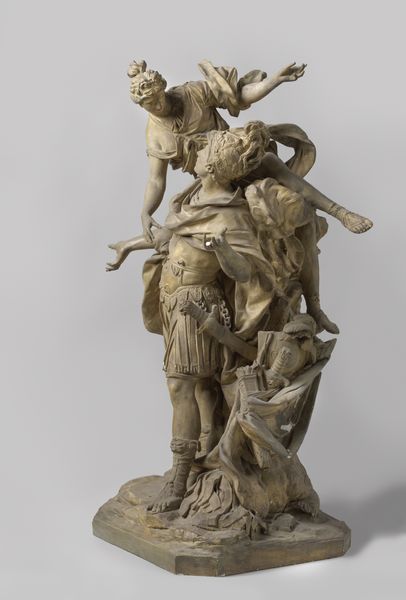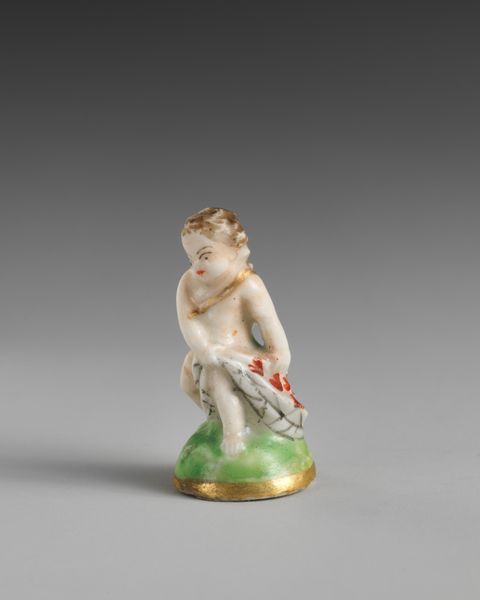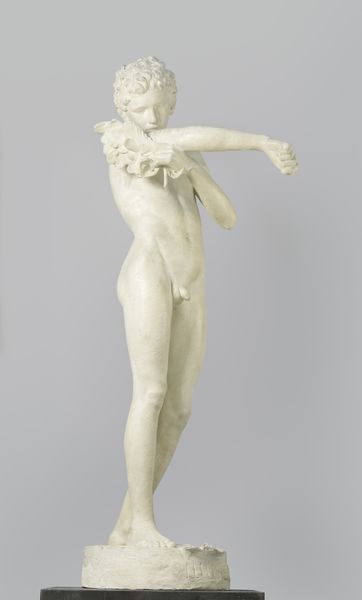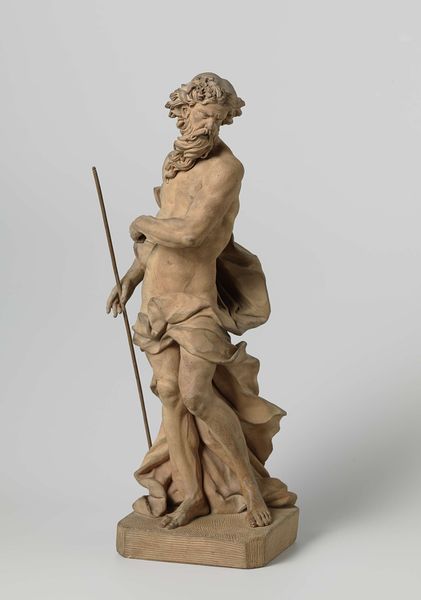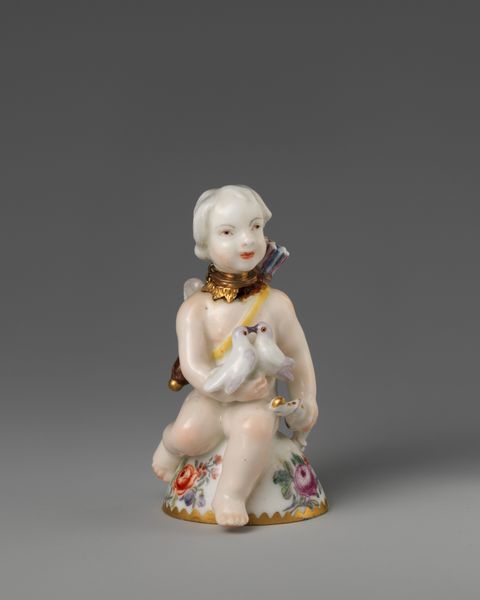
porcelain, sculpture
#
allegory
#
porcelain
#
figuration
#
sculpture
#
nude
#
rococo
Copyright: Rijks Museum: Open Domain
This is a porcelain sculpture of Venus and Mercury, crafted by Wilhelm Caspar Wegely in eighteenth-century Germany. The pairing of Venus, goddess of love, with Mercury, god of commerce, is not as incongruous as it might seem: love and commerce were closely linked in the aristocratic culture of Wegely's time. Eighteenth-century porcelain production was tied to court patronage. Wegely attempted to establish a porcelain manufactory in Berlin in 1751, but the factory struggled financially and was eventually taken over by the Prussian King Frederick the Great. Royal factories catered to the tastes of the court, so the subject matter of porcelain sculpture often alluded to courtly love, as well as the aristocracy's financial interests. This sculpture subtly elevates the status of merchants by associating them with the gods. To understand this piece fully, we would need to research the history of porcelain manufacture in Germany and the social role of court art. By looking at the art through this socio-economic lens, we understand its place in society.
